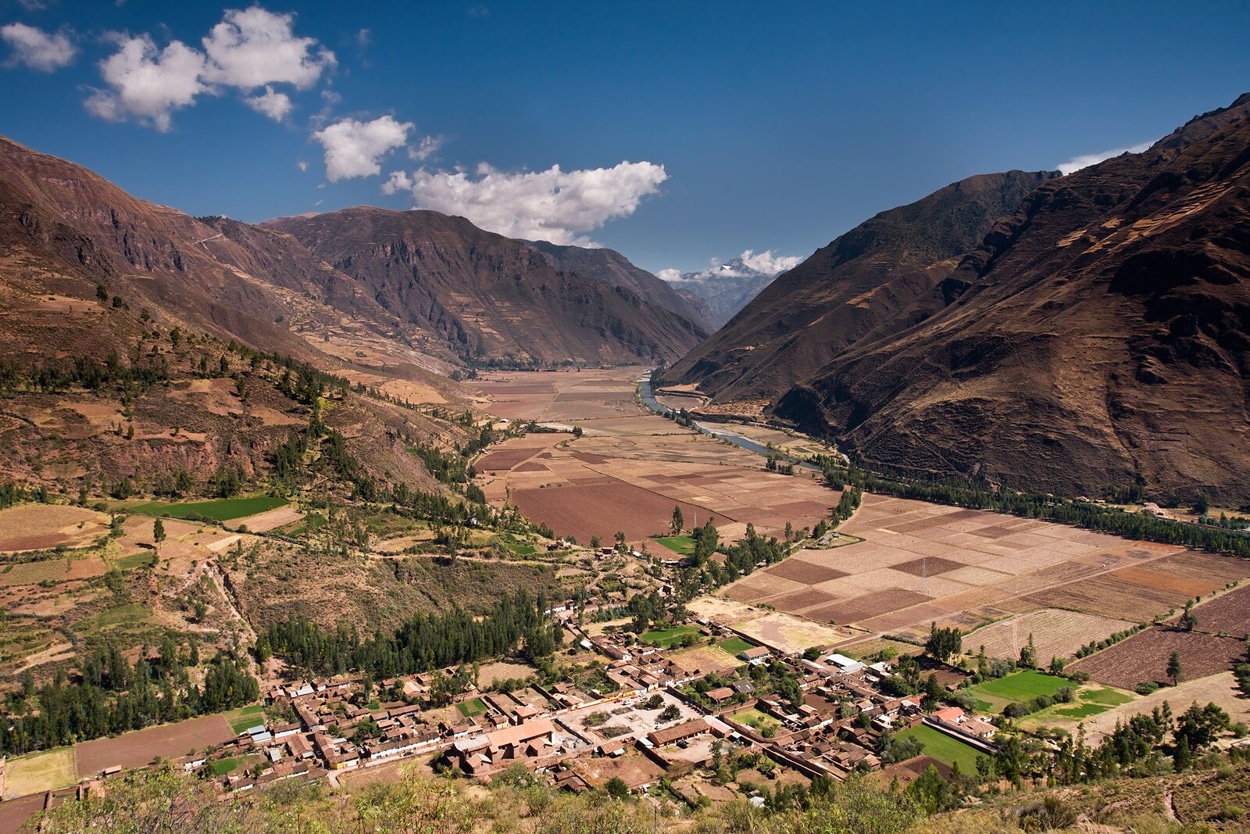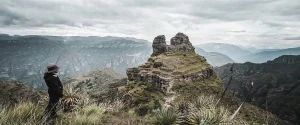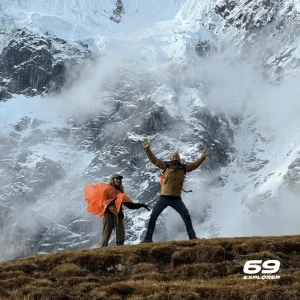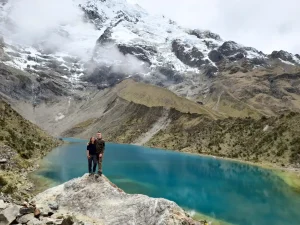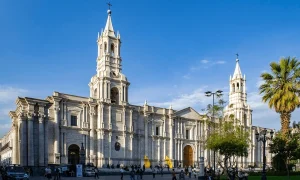Located between Cusco and Machu Picchu, the Sacred Valley of the Incas is one of Peru’s most captivating destinations, both for its natural beauty and its cultural relevance. Once the agricultural heartland of the Inca Empire, this fertile valley stretches along the Urubamba River and is framed by Andean peaks, terraced hillsides, and colorful towns.
Beyond its breathtaking landscapes, the Sacred Valley holds deep historical relevance. It was a vital source of corn, potatoes, quinoa and other crops for the Incas. Also, was a sacred space where astronomy, spirituality, and daily life converged.
Today, travelers are captivated by the valley’s mix of archaeological wonders like Pisac and Ollantaytambo, colorful markets, and vibrant communities that still preserve ancient traditions. Whether as a gateway to Machu Picchu or a destination in its own, the Sacred Valley offers a unique window into the living legacy of Andean culture.
Weather
The Sacred Valley has a temperate climate that makes it a year round destination, but each season paints the landscape with its own palette.
Stretching along the Urubamba River, the valley sits at a lower altitude than Cusco, around 2800 m (9200 ft). This lower elevation makes the climate noticeably milder and less harsh, specially during the nighttime. The surrounding Andes mountains act as natural barriers, reducing rainfall and protecting the valley from extreme weather.
From May to September, the dry season brings clear skies, crisp mornings, and warm sunny days. Offering the perfect conditions for hiking, exploring ruins, and enjoying the valley’s vast views. From October to April, the rainy season transforms the Sacred Valley into an exuberant, green paradise. Afternoon showers are common, and despite trails getting muddy, the scenery is at its most vibrant. Rivers run fuller and fields glow with life.
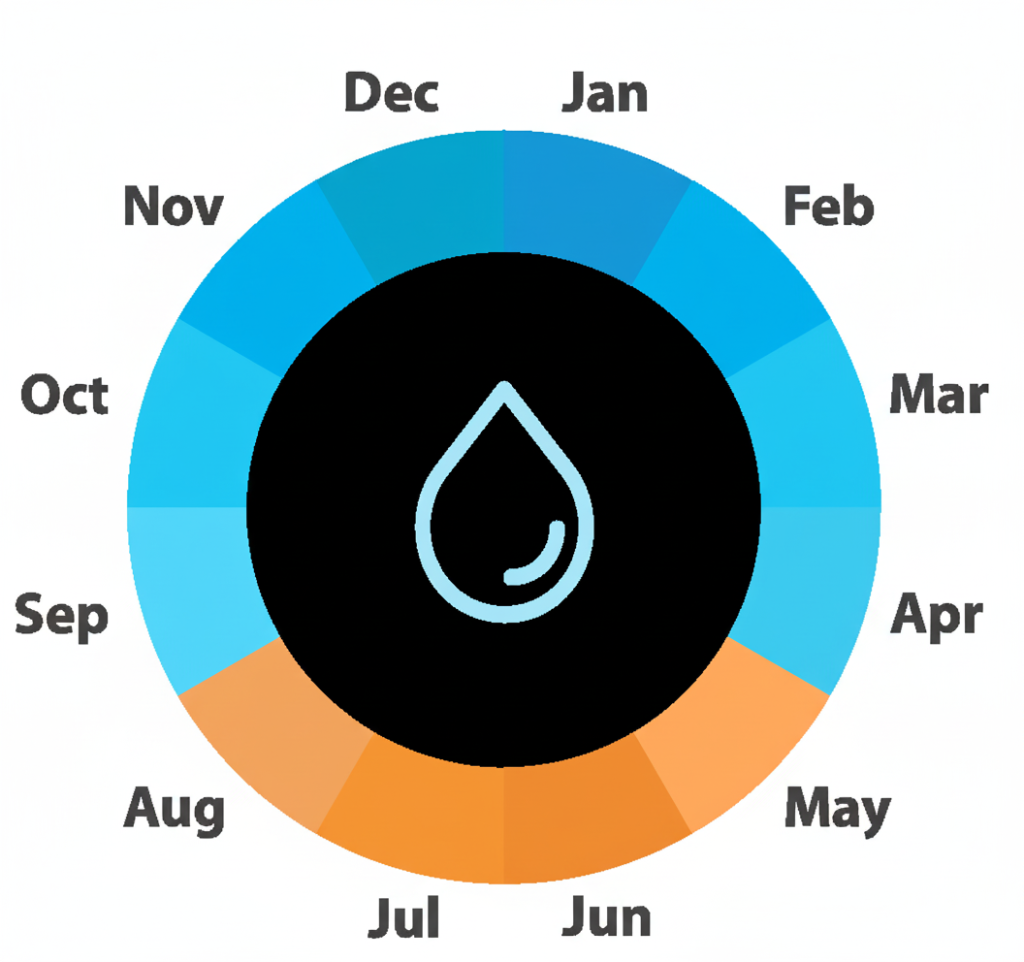
Temperatures remain mild throughout the year, making The Sacred Valley a comfortable base for acclimatizing before venturing higher into the Andes.
Rainy season vs. dry season
Each season has its own perks, so visiting the Sacred Valley will have a different experience for visitors during different times of the year.
Dry season:
- Days are sunny and skies are clear.
- Ideal conditions for trekking the Inca Trail, exploring Machu Picchu, or higher altitude sites like the Rainbow Mountain.
- Photography is at its best, with clearer skies and less chances of fog.
- Long hikes are more comfortable, with less humidity in the forecast.
- Festivals also abound. June brings Inti Raymi, the spectacular Inca Sun Festival, and a lively calendar of parades, dances, and rituals.
- The trade-off, however, is larger crowds and higher prices, so booking well in advance is key.
Rainy season:
- The Sacred Valley bursts into life: mountains glow with greenery, flowers bloom, and waterfalls swell with power.
- Fewer tourists, consequently quieter archaeological sites.
- More availability in hotel and lower prices.
- Photography also has its perks, better lightning and less contrast plus lively colors.
- While sudden showers can disrupt plans, the chances of trips getting canceled due to extreme weather is low. There will be few exceptions that usually close, due to road conditions.
History
Inca History
Long before Spanish conquistadors arrived, the Sacred Valley was one of the most important regions of the Inca Empire. Its fertile soil, lower altitude, and favorable climate made it the empire’s agricultural center.
The Incas engineered terraces, irrigation canals, and storage facilities to maximize production. The Incas believed the Urubamba River mirrored the Milky Way, and the surrounding peaks were considered apus, or protective mountain spirits. Cities like Pisac and Ollantaytambo were built as both administrative centers and ceremonial hubs.
Colonial History
With the Spanish conquest in the 1500s, the Sacred Valley experienced profound changes. The Incas’ agricultural systems were largely repurposed to benefit the new colonial economy, while churches and haciendas rose on top of pre-Hispanic sites.
Ollantaytambo became one of the last strongholds of Inca resistance under Manco Inca, who fought the Spanish from the fortress there before retreating into the jungle.
Over time, colonial towns took root in the valley, blending Spanish architecture with Andean traditions, creating the unique cultural tapestry still visible today in plazas, churches, and fiestas.
Modern History
In the 20th and 21st centuries, the Sacred Valley shifted from an agricultural backbone to a cultural and tourism hub. While farming communities continue to thrive, the valley has also become a meeting point where travelers explore ruins, visit traditional markets, and connect with living Andean culture & unique nature.
Modern Pisac is famous for its artisan market; Ollantaytambo remains a “living Inca town,” where original stone streets and houses are still in use. Newer destinations, like Maras and Moray, highlight the valley’s experimental farming history.
Today, the Sacred Valley balances heritage and modernity: it is a place where ancestral traditions (festivals, weaving, and rituals) continue alongside sustainable tourism and global visitors seeking connection with the Andes.
Interest points in the Sacred Valley
Chinchero
Known as the “Land of the Rainbow”, Chinchero was once an Inca agricultural and ceremonial center. The town is built on top of ancient terraces. Under the ruins of an Inca palace partially covered by a colonial church, a striking symbol of cultural overlap.
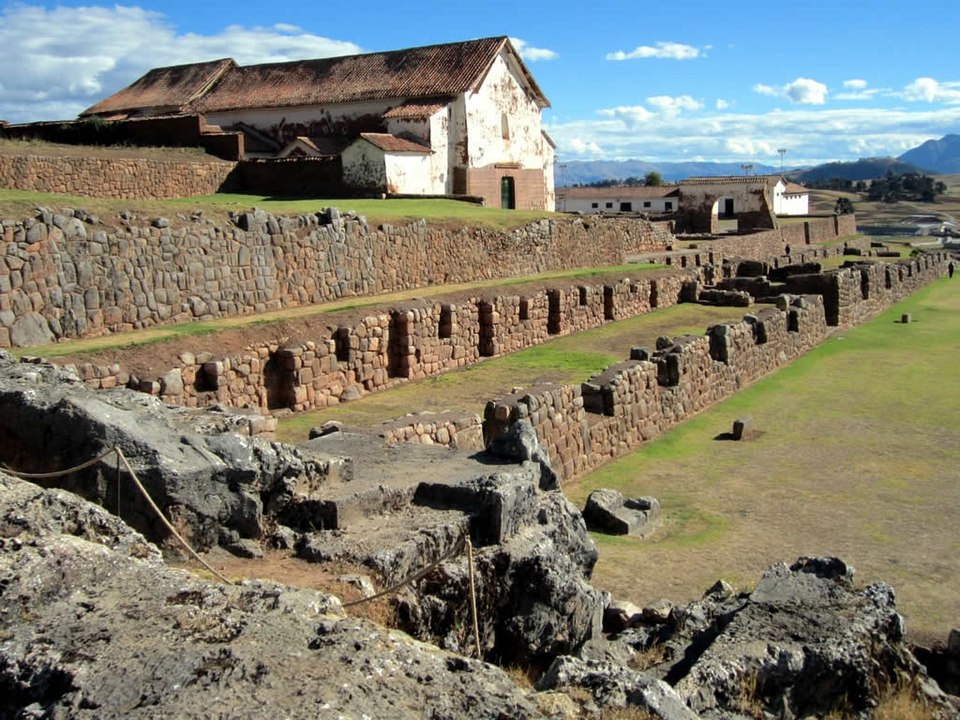
Today, Chinchero is most famous for its vibrant textile tradition. Local weaving cooperatives keep alive ancestral techniques, using natural dyes and backstrap looms. For visitors, it offers a window into Inca history and a living workshop of Andean craftsmanship.
Pisac
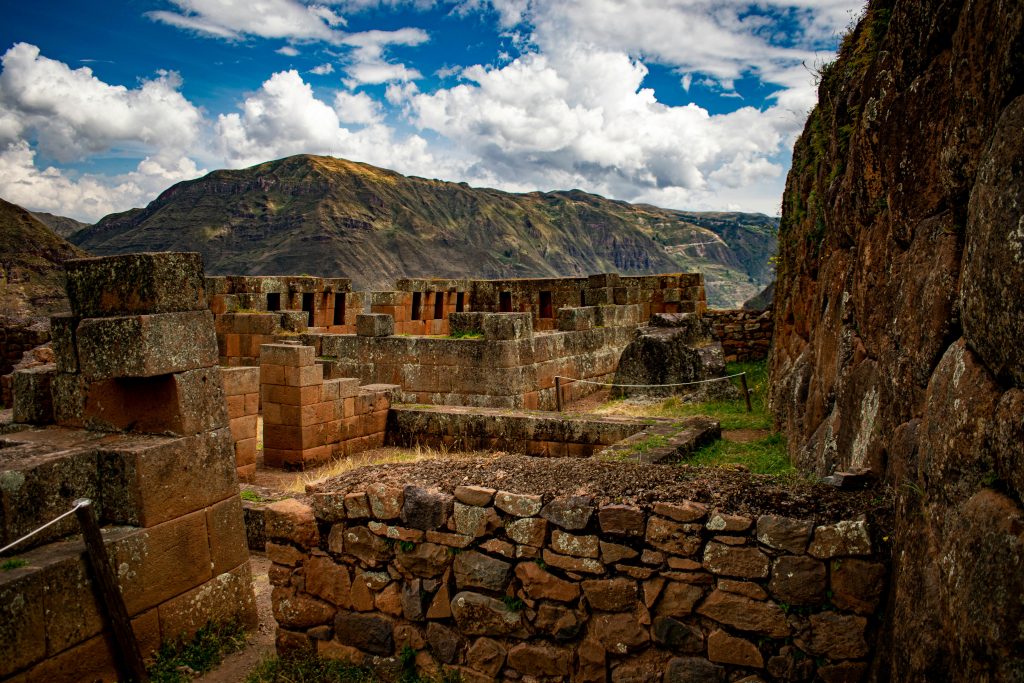
Pisac was a major Inca settlement, strategically placed to guard the southern entrance to the Sacred Valley. Its hillside ruins are impressive, featuring agricultural terraces, ceremonial baths, and a vast burial site. During colonial times, a new Spanish town was founded below the ruins.
Today, Pisac is equally renowned for its colorful artisan market, where travelers find handicrafts, jewelry, and traditional Andean clothing. It has also become a hub for yoga, retreats, and spiritual tourism, blending its ancient aura with modern seekers of wellness.
Urubamba
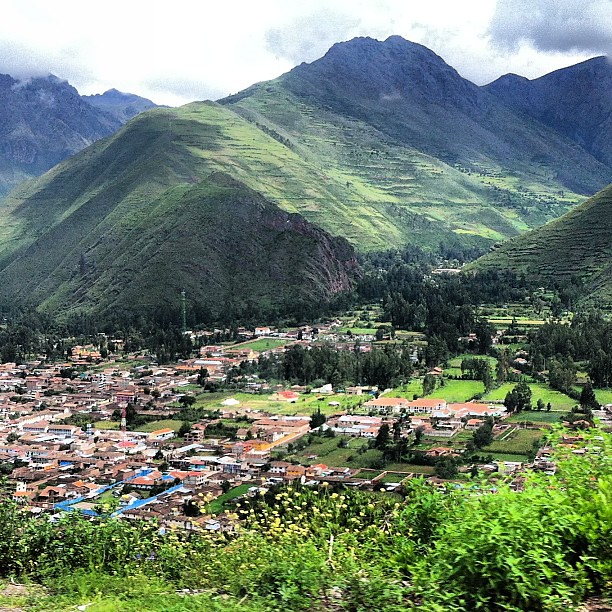
Once a quiet agricultural village, Urubamba served as a key point along Inca trade routes due to its fertile soil and central location. Spanish colonists later developed it as a farming and ranching area.
Today, Urubamba has grown into the valley’s most modern town, often serving as a base for travelers. With hotels, restaurants, and markets, it bridges traditional Andean life with modern comforts, while still being surrounded by maize fields and overlooked by towering mountains.
Maras
Maras rose to importance during the colonial period, when many Spanish families settled here after Cusco’s elite moved out of the capital. Its church and colonial houses still carry the charm of that era.
The highlight, however, is the nearby Maras Salt Mines (Salineras de Maras), a network of over 3,000 salt pools that have been harvested since pre-Inca times. Nowadays local families continue the ancestral practice under their own brand MARASAL
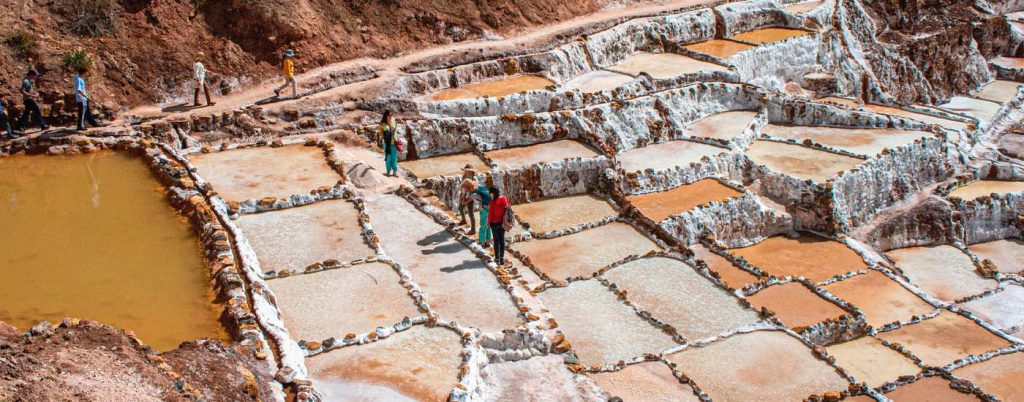
Moray
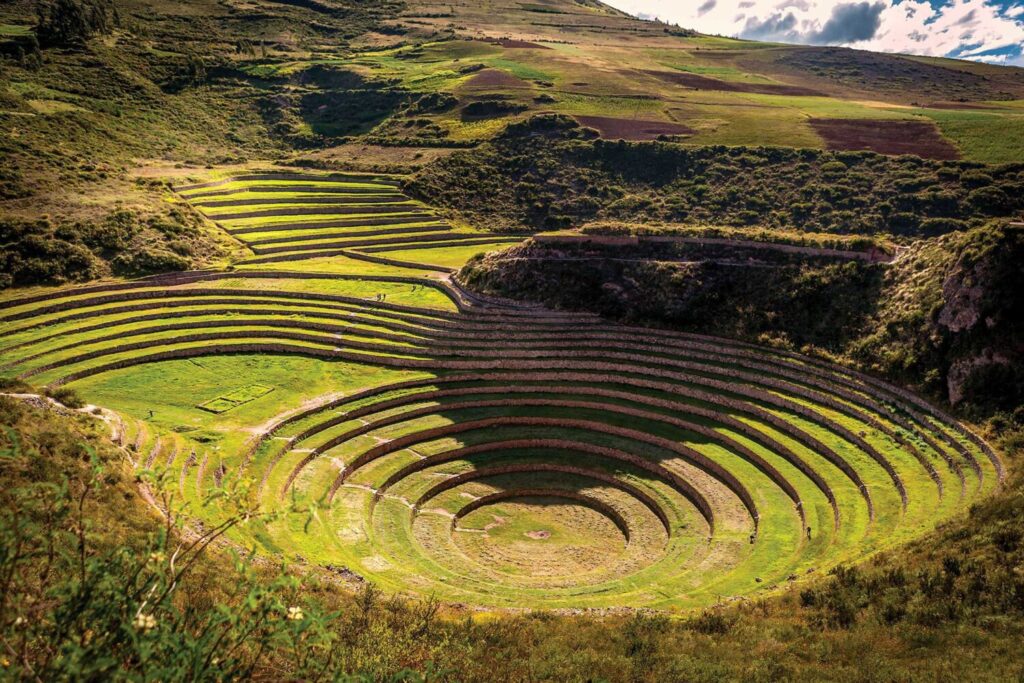
Moray is one of the most fascinating archaeological sites in the Sacred Valley. The Incas built a series of concentric circular terraces that descend like an amphitheater. Scholars believe it was an agricultural laboratory, where microclimates created by the terraces allowed experimentation with different crops.
Today, Moray stands as a testament to Inca ingenuity and is a favorite spot for visitors intrigued by ancient science, engineering, and the harmony between agriculture and environment.
Ollantaytambo
Ollantaytambo was a royal estate of Emperor Pachacuti and one of the empire’s most significant administrative, religious, and military centers. Its fortress terraces were also the site of one of the few Inca victories against the Spanish during Manco Inca’s rebellion.
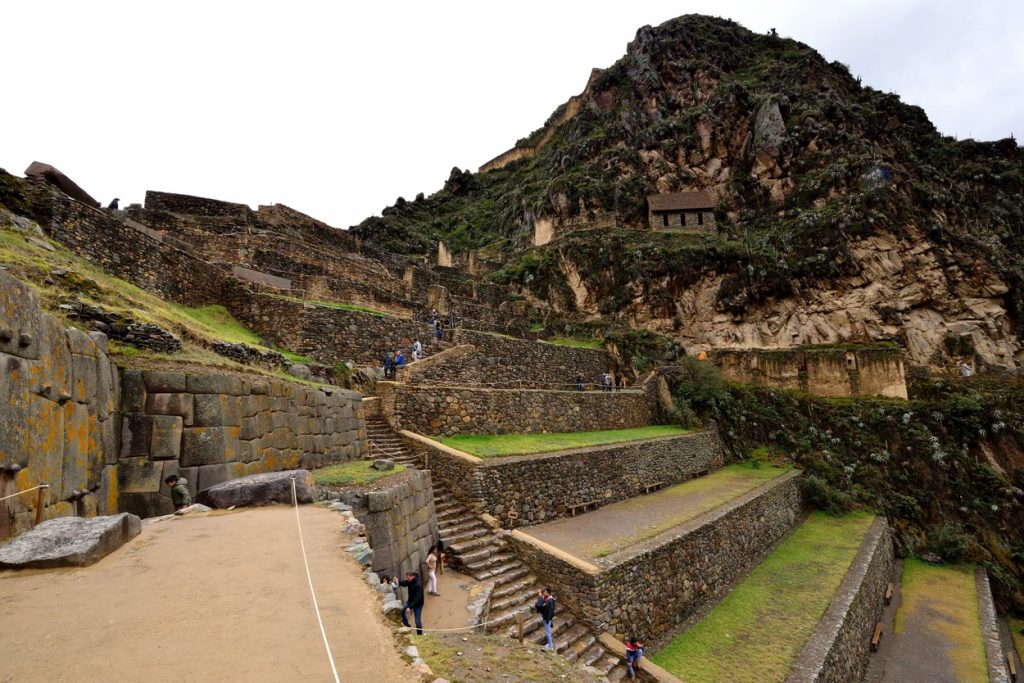
Unlike many ancient towns, Ollantaytambo is still inhabited. Its original Inca Street grid, stone canals, and houses remain in use. Today, it is a captivating archaeological site and the main departure point for trains to Machu Picchu, making it a mandatory stop in the Sacred Valley.
Activities
Archeological sites
The Sacred Valley is an open-air museum of Inca engineering and spirituality. Each site in The Valley tells a story of power, astronomy, and everyday life. Exploring these ruins means walking in the footsteps of Inca nobles, altomisayocs, and farmers while admiring breathtaking mountains in the background.
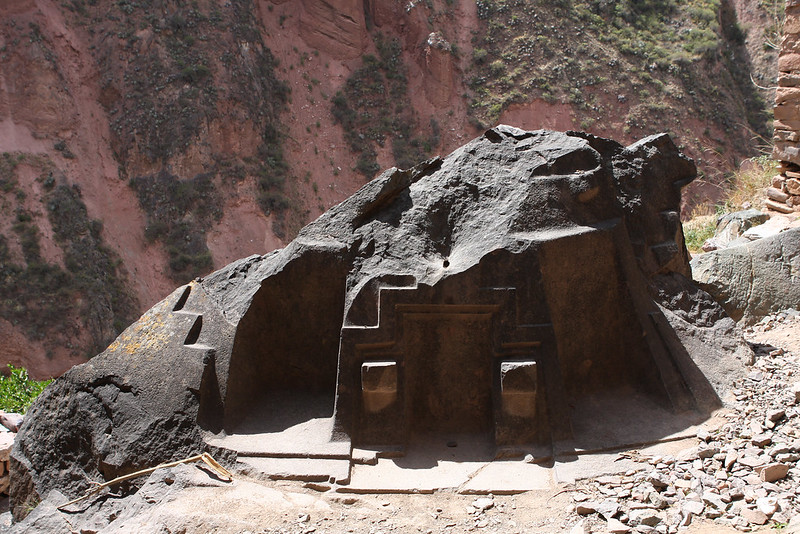
Maras & Moray Tours
A classic combination in the valley, these tours reveal 2 very different sides of Inca heritage. Moray impresses with its circular agricultural terraces, believed to be a crop laboratory, while Maras stuns with thousands of salt pools cascading down a mountainside. Together, they show the ingenuity and economical development of the empire, and both remain strikingly photogenic.
Check this Sacred Valley options from Cusco.
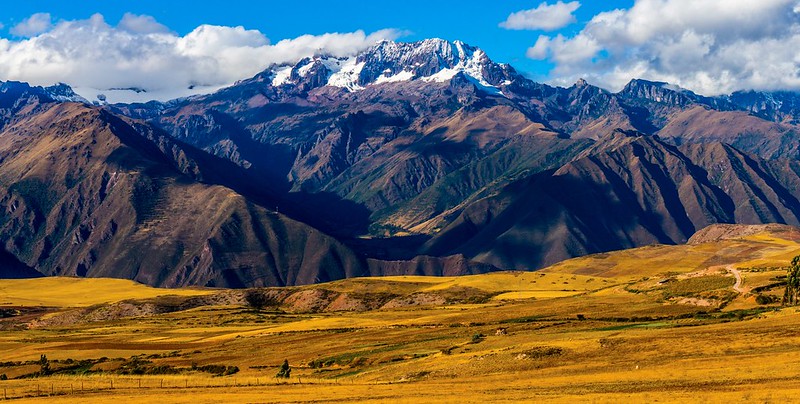
Water Rafting
For adventure seekers, rafting the Urubamba River offers a thrilling way to experience the valley. Depending on the season, rapids range from class II flows to more intense class IV runs. Surrounded by stunning vegetation and towering peaks, the river offers both adrenaline and scenery in equal measure.
Check this multi-sport tour to Machu Picchu.
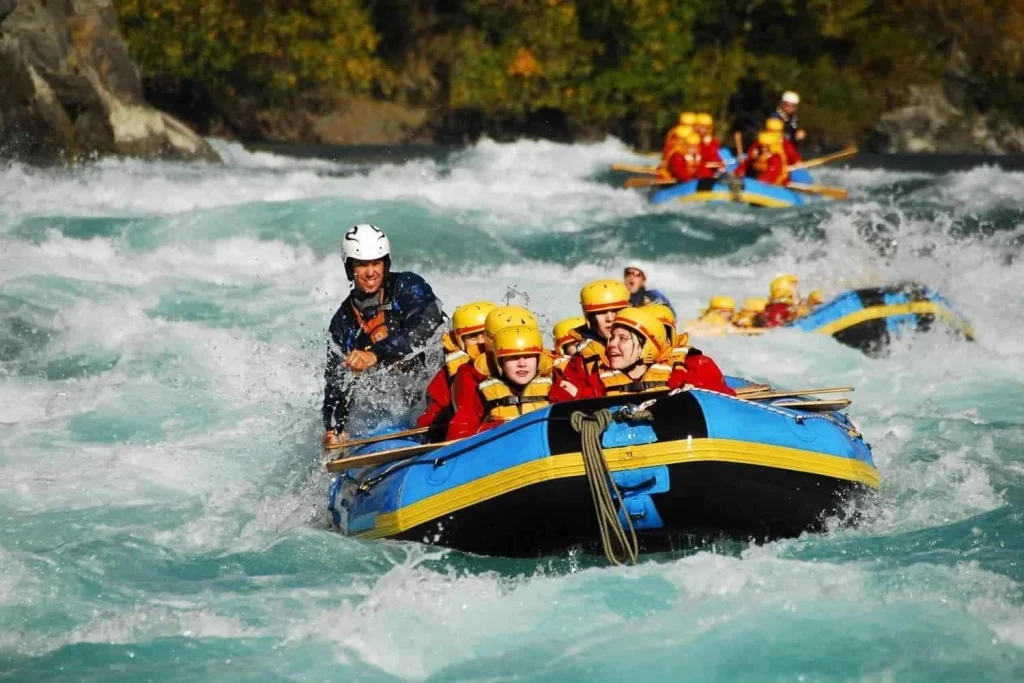
Paddle boarding
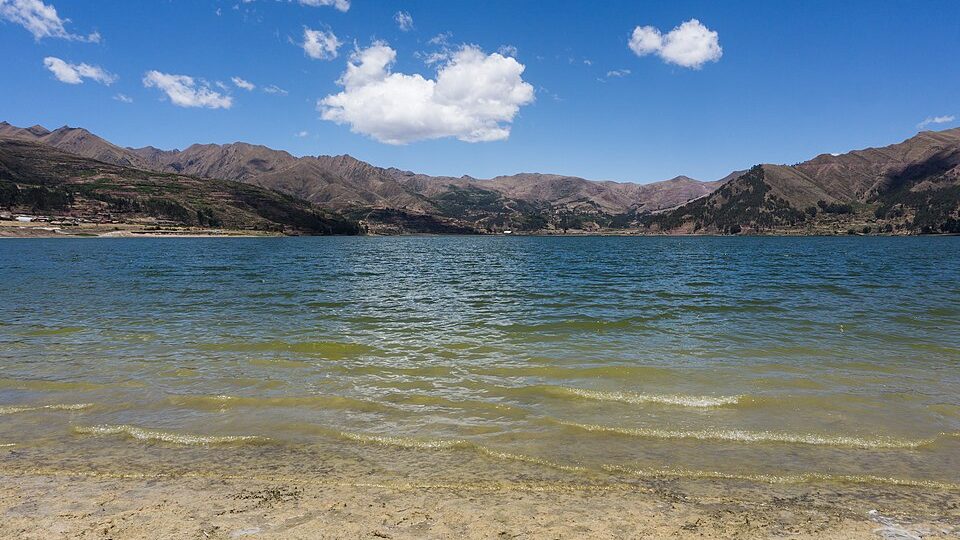
A more tranquil water experience, paddle boarding on Lake Piuray (near Chinchero) has become increasingly popular. With calm waters reflecting the surrounding mountains, it’s a peaceful activity that combines sport, balance, and meditation.
Zip lining and mountaineering
The Sacred Valley is also a playground for those who crave heights. Zip lining lets travelers soar across canyons and valleys. More daring adventurers can try via ferrata climbing routes, which include climbing vertical cliffs and even sleeping in glass pods suspended over the valley floor.
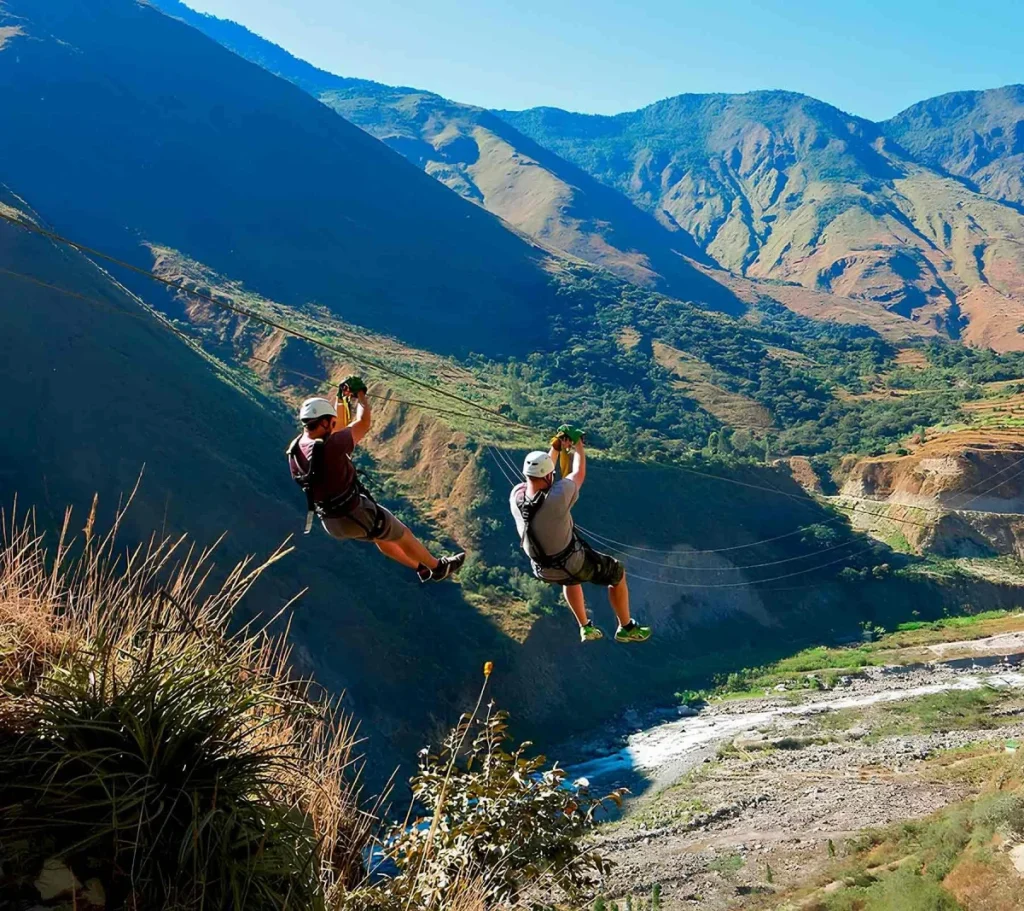
Atv tours
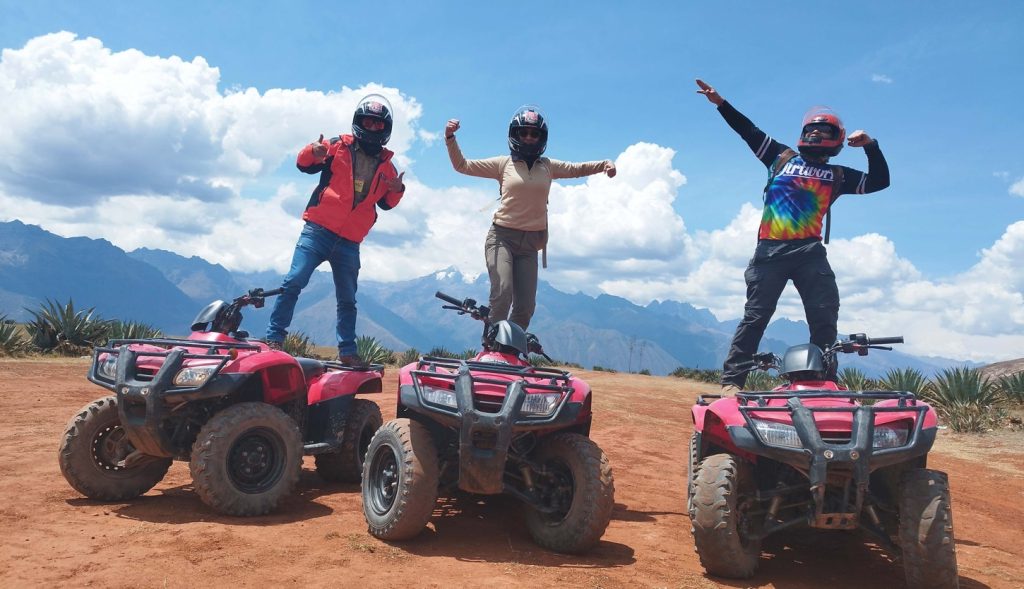
ATV adventures combine adrenaline with exploration, taking travelers off the beaten path to hidden corners of the valley. Popular routes pass through rural villages, agricultural fields, and scenic highland viewpoints, often stopping at Maras and Moray along the way. It’s a fast-paced way to see both culture and landscape.
Check this amazing Sacred Valley tour with ATVs.
E-biking
E-biking is one of the newer ways to explore the Sacred Valley, offering a perfect mix of adventure and accessibility. With electric assistance, riders can cover more ground and tackle hills with ease, making it suitable even for those not used to high-altitude cycling.
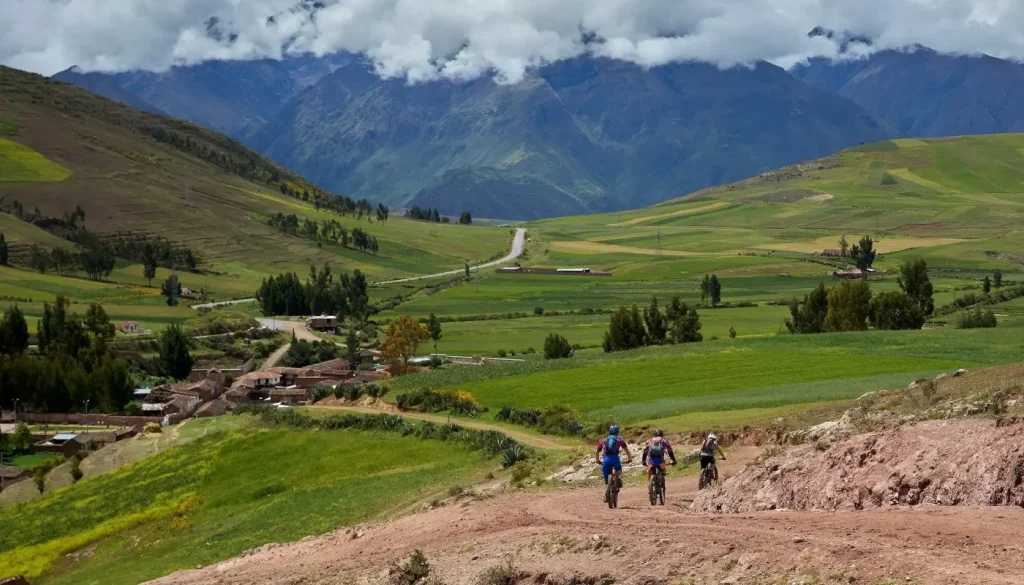
Popular routes include riding through traditional villages, farmland, and scenic stretches near Moray or Lake Huaypo. It’s eco-friendly, fun, and a fresh way to see the valley beyond the main tourist circuits.
Explore the Sacred Valley on E-bikes.
Hikes
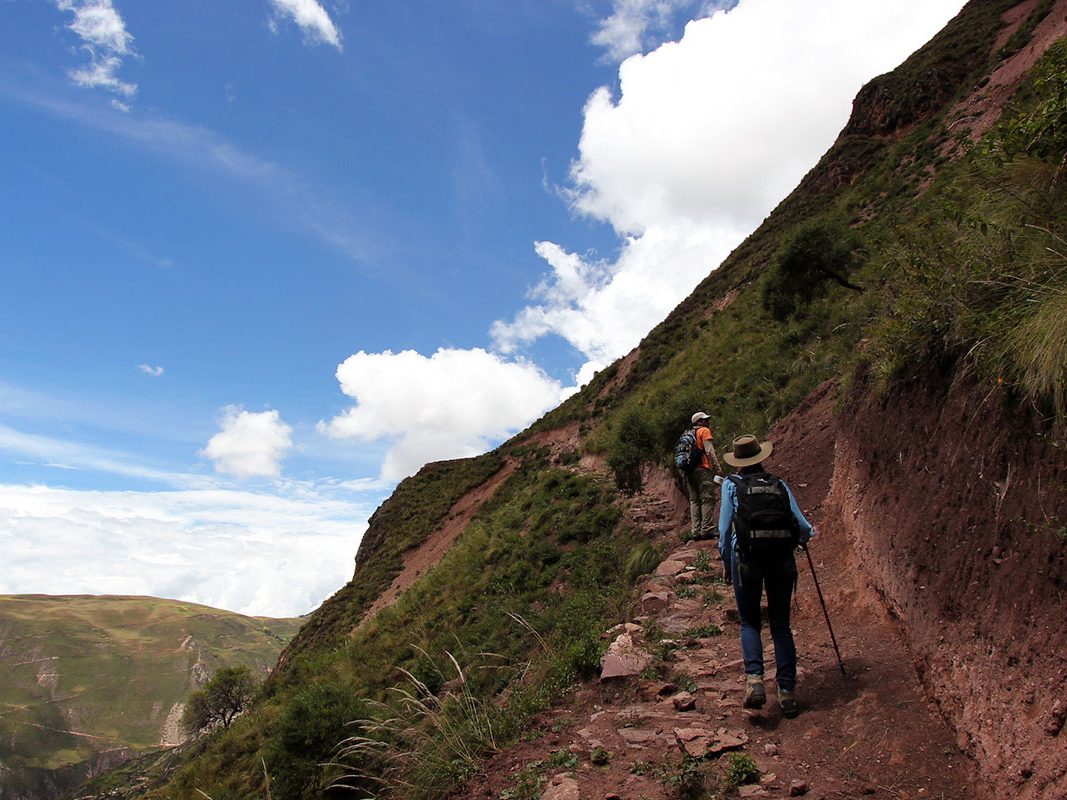
Hiking is perhaps the most authentic way to connect with the Sacred Valley. Trails range from gentle countryside walks to challenging treks linking ancient ruins and mountain passes. Options like the hike to Huchuy Qosqo or the trails around Ollantaytambo immerse travelers in Andean nature, history, and culture at a slower, more intimate pace.
Explore Huchuy Qosqo and Machu Picchu.
Artisan markets
Beyond the ruins and landscapes, the Sacred Valley is alive with vibrant markets. Pisac, Chinchero, and Urubamba host gatherings where artisans sell textiles, ceramics, jewelry, and carvings. These markets are more than just shopping spots, they’re cultural encounters where ancestral techniques and local traditions remain alive, offering visitors the chance to bring home a piece of the Andes.
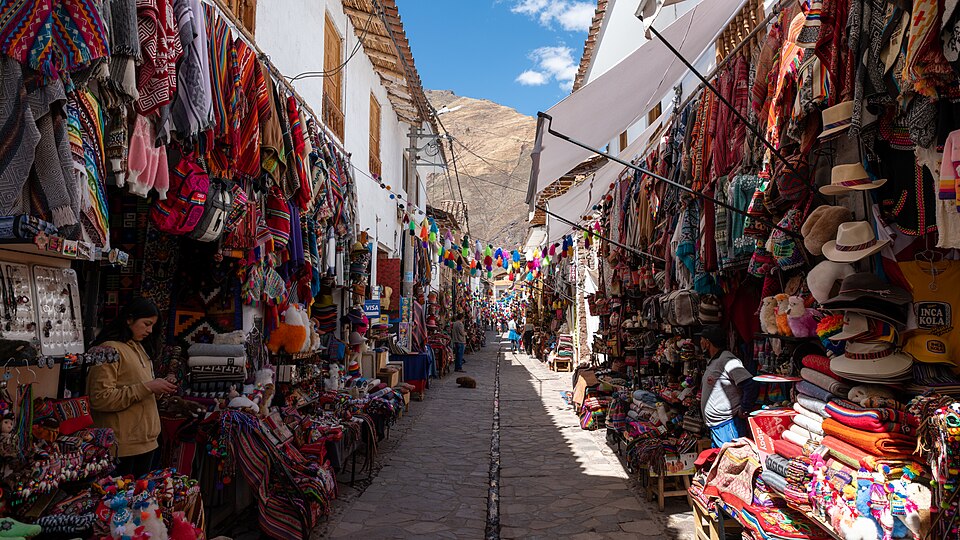
Gastronomy
Food in the Sacred Valley is as rich and diverse as its landscapes, shaped by centuries of Inca agriculture, colonial influence, and modern culinary innovation. Many traditional dishes continue to be prepared with ancient techniques. Here are three highlights that capture its flavor:
Maize (Corn) and Chicha
The Sacred Valley was the agricultural heartland of the Incas, and maize remains central to its cuisine. Giant-kernel corn, unique to the region, is enjoyed simply boiled or roasted as choclo con queso (corn & fresh cheese). It is also the base of chicha, a traditional fermented or non-fermented corn drink that has been part of Andean rituals and daily life for centuries.

Cuy (Guinea Pig)
Considered a delicacy since Inca times, Cuy is part of cultural tradition, often served during festivals and family gatherings. Usually roasted or baked, it is accompanied by potatoes and spicy sauces like ají. While adventurous for many travelers, tasting cuy offers a direct link to Andean heritage.
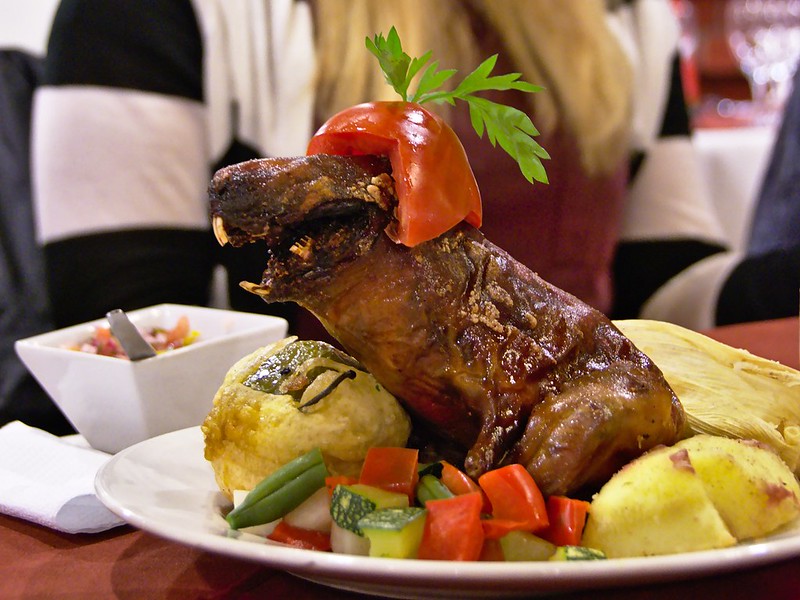
Quinoa and Native Potatoes
The Sacred Valley is also the birthplace of Quinoa, once called the “mother grain” by the Incas. It’s used in soups, salads, and stews, celebrated today for its nutritional value worldwide. Alongside it, the valley produces hundreds of varieties of native potatoes, each with distinct colors, flavors, and textures.
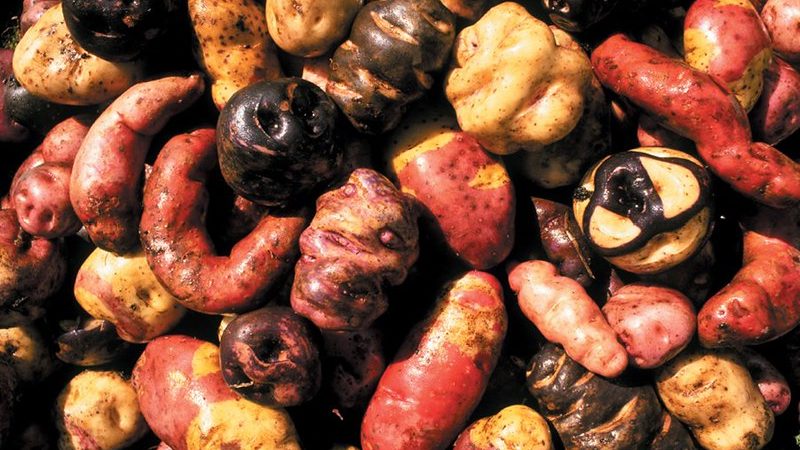
Accommodation
The Sacred Valley offers a wide range of stays, from rustic campsites to luxury resorts tucked among the mountains. Because the valley sits lower than Cusco, many travelers choose to overnight here to enjoy warmer nights, calmer energy, and easier acclimatization before heading to Machu Picchu.
Budget Options ($15–40 per night): Simple hostels and family-run guesthouses. Available in towns like Pisac, Urubamba, and Ollantaytambo. These are ideal for backpackers and cultural travelers who want authentic Andean hospitality at a low cost.
Mid-Range ($50–120 per night): Boutique hotels and eco-lodges offer comfortable rooms, landscaped gardens, and mountain views. Many feature traditional styles with modern touches, balancing authenticity and comfort.
Luxury ($150–500+ per night): High-end resorts often feature spas, gourmet dining, and immersive experiences like cooking classes or spiritual ceremonies. They are perfect for travelers who want to combine relaxation with cultural immersion in a stunning natural setting.
Top 3 Recommended Stays
Hotel Andenes del Inca (Ollantaytambo). A cozy 3-star, family-run hotel just steps from Ollantaytambo’s main square and train station. Features mountain or garden views. Guests enjoy free WiFi, hot showers, and a hearty breakfast. The on-site restaurant serves traditional Peruvian dishes, and extras like a sauna and jacuzzi make it a great spot to relax before or after Machu Picchu. Friendly staff and its central location make it a solid value stay in the Sacred Valley.
Tambo del Inka (Urubamba). A luxury resort managed by Marriott, offering riverside views, world-class dining, a spa, and even its own private train station to Machu Picchu. Ideal for travelers seeking comfort and convenience.
Inkaterra Hacienda (Urubamba). A boutique eco-luxury hotel set in the heart of the valley, with colonial-style architecture, farm-to-table cuisine, and programs focused on sustainability and local culture.
Travel tips
Planning ahead
The Sacred Valley is best enjoyed with a mix of structure and flexibility. Key sites like Machu Picchu and the Inca Trail require tickets and permits that sell out months in advance, especially during the dry season (May–September). Booking trains, guided tours, and accommodations early ensures the best choices. At the same time, leave room in your schedule for spontaneous visits to markets, small hikes, or local festivals.
Packing list
The weather in the Andes can shift quickly, so layers are essential. Bring lightweight clothes for sunny days, a warm jacket for cool evenings, and a rain shell if traveling during the wet season. Good walking shoes are a must for exploring ruins and uneven cobblestone streets. Don’t forget sunscreen, a hat, insect repellent, and a reusable water bottle. A small daypack is useful for hikes and day trips.
Altitude sickness
Although the Sacred Valley is lower than Cusco, altitude can still affect travelers. Symptoms include shortness of breath, headaches, and fatigue. To minimize discomfort, acclimatize gradually. Spend your first nights in the valley before Cusco if possible. Stay hydrated, avoid heavy meals and alcohol the first days, and consider coca tea or local remedies. For more serious cases, hotels often provide oxygen or travelers can bring prescribed medication.
Transportation
Getting around the Sacred Valley is relatively easy. Shared vans (colectivos) are the most affordable way to travel between towns, while private drivers or taxis offer flexibility and comfort for day trips. Trains from Ollantaytambo connect directly to Machu Picchu.
Currency
Many hotels and larger restaurants accept credit cards, small markets, artisan stalls, and colectivos are cash-only. It’s best to carry small denominations, as vendors often don’t have change for larger bills. ATMs are available in Cusco, Urubamba, and Ollantaytambo, but it’s wise to withdraw cash before venturing into smaller villages.
Machu Picchu
No trip to the Sacred Valley is complete without Machu Picchu, but visiting requires preparation. Tickets are limited to specific circuits and time slots, so book early. A guide is highly recommended (and sometimes required). Consider spending the night in Aguas Calientes for an early entry, when the citadel is quieter.
Don’t forget to pack your passport. They will ask for it at the entry. Keep in mind that large backpacks, drones, and food are not allowed inside.
FAQS
Absolutely. The Sacred Valley combines stunning landscapes, Inca history, living culture, and outdoor adventure. It’s not just a stopover, it’s one of the most rewarding regions in Peru.
The valley offers a softer introduction to the Andes than Cusco, with a milder climate and lower altitude. It’s also home to world-class archaeological sites (Pisac, Ollantaytambo, Maras, Moray, Perolniyoc), vibrant artisan markets, and authentic Andean communities that preserve centuries-old traditions.n Peru.
Most travelers spend 2–3 days, which is enough to see key highlights. If you want to hike, visit more villages, or enjoy adventure activities, you can easily extend to 4–5 days without running out of things to do.
Yes, many agencies offer full-day Sacred Valley tours from Cusco. These cover Pisac, Ollantaytambo, and sometimes Chinchero or Maras & Moray. While convenient, a day trip can feel rushed. Staying overnight allows you to explore at a slower pace and enjoy quieter moments after the crowds leave.
The Boleto Turístico del Cusco is a pass that gives access to multiple archaeological sites and museums in Cusco and the Sacred Valley. There are full tickets and partial tickets depending on which areas you plan to visit. Sites like Pisac, Ollantaytambo, and Chinchero are included, but note that Maras requires a separate entrance fee.
The valley stretches northwest of Cusco, following the Urubamba River. Its main towns Pisac, Urubamba, and Ollantaytambo are between 45 minutes and 2 hours from Cusco by car.
Ollantaytambo is the main gateway. From here, trains depart to Aguas Calientes, the town at the base of Machu Picchu. Many travelers spend a night in Ollantaytambo before catching the early train to the citadel.
The Sacred Valley sits lower than Cusco (around 2800 m / 9200 ft compared to Cusco’s 3400 m / 11150 ft), so many travelers feel better starting their trip here. Still, altitude can affect anyone. Drink water, take it easy the first day, and try coca tea or light meals to help acclimatize.
Tipping in Peru isn’t mandatory, but it’s greatly appreciated and has become common in the tourism industry.

